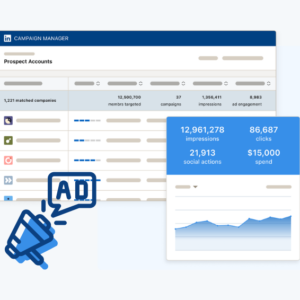Affiliate marketing is a dynamic and increasingly popular form of online marketing that connects merchants with independent marketers, known as affiliates. In this model, affiliates promote a merchant’s products or services and earn a commission for each sale or action generated through their marketing efforts. This arrangement allows merchants to expand their reach and sales without the need for extensive advertising budgets, while affiliates can earn income by leveraging their marketing skills and audience.
What is Affiliate Marketing?
Affiliate marketing is a performance-based marketing strategy where an individual (the affiliate) promotes another company’s products or services and earns a commission for each sale or action generated through their promotional efforts. This model allows affiliates to earn passive income without the need to create their own products.
The concept of affiliate marketing is rooted in performance marketing, meaning that affiliates are compensated based on the results they deliver, such as sales or leads. This creates a mutually beneficial relationship where both parties can thrive. Merchants can focus on product development and customer service, while affiliates concentrate on driving traffic and conversions.
Key Components of Affiliate Marketing
Affiliate marketing is built on a network of relationships between different parties who work together to promote products or services. Here are the key components that make up this marketing strategy:
1. Merchant (Advertiser)
- Who They Are: The merchant, also known as the advertiser, is the company or individual that creates and sells the product or service.
- Role: They offer an affiliate program, providing affiliates with tracking links, marketing materials, and commission structures. Merchants benefit from increased sales and brand visibility without upfront marketing costs.
2. Affiliate (Publisher)
- Who They Are: The affiliate, also called the publisher, is the individual or company that promotes the merchant’s product or service.
- Role: Affiliates use various marketing strategies like content creation, social media promotion, email marketing, and paid advertising to drive traffic to the merchant’s website. In return, they earn a commission for each sale, lead, or action generated through their unique affiliate links.
3. Consumer
- Who They Are: The consumer is the end-user who purchases the product or service.
- Role: They interact with the affiliate’s content, click on affiliate links, and complete a purchase or desired action. Consumers are the key to the success of the affiliate marketing process, as their actions directly result in commissions for affiliates.
4. Affiliate Network (Optional but Common)
- Who They Are: The affiliate network is a platform that acts as an intermediary between the merchant and affiliates.
- Role: It manages the affiliate program, handling tasks like tracking affiliate-generated sales, managing payouts, and providing reporting tools. Networks like Amazon Associates, ShareASale, and ClickBank are popular examples. While not all affiliate programs use a network, it simplifies the process for both merchants and affiliates.
5. Tracking and Analytics Tools
- What They Are: These are tools and software used to track the performance of affiliate links, monitor traffic, and analyze conversions.
- Role: Tracking tools ensure that affiliates are credited for the sales or leads they generate. They provide valuable data on which strategies are working, helping affiliates optimize their marketing efforts and merchants assess the effectiveness of their affiliates.
6. Commission Structure
- What It Is: The commission structure defines how much and how affiliates are paid.
- Role: Commissions can be a fixed amount per sale, a percentage of the sale, or based on other actions like sign-ups or downloads. The structure incentivizes affiliates to promote products and can vary widely depending on the industry and product.
7. Marketing Content
- What It Is: Marketing content includes blog posts, reviews, videos, social media posts, email campaigns, and more that affiliates create to promote products.
- Role: Effective content engages the audience, builds trust, and encourages consumers to take action. Affiliates often tailor content to their audience’s interests to maximize conversions.
8. Conversion Rate
- What It Is: The conversion rate is the percentage of consumers who complete the desired action (e.g., making a purchase) after clicking an affiliate link.
- Role: A higher conversion rate indicates more effective marketing and results in higher earnings for affiliates. Both affiliates and merchants focus on optimizing content and user experience to improve conversion rates.
The key components of affiliate marketing work together to create a successful performance-based marketing system. Understanding each component is crucial for anyone looking to thrive in the affiliate marketing space.
How Affiliate Marketing Works
Affiliate marketing is a performance-based strategy where affiliates earn commissions by promoting a merchant’s products or services. Here’s a breakdown of how the process works:
Joining an Affiliate Program
- Affiliates Sign Up: An individual or business joins an affiliate program offered by a merchant or through an affiliate network. During the sign-up process, affiliates provide details about their platform (like a blog or social media channels) and receive approval to participate.
- Receive Unique Tracking Links: Once approved, the affiliate is given unique tracking links for the products or services they wish to promote. These links are crucial as they track the affiliate’s performance and ensure they get credited for sales or leads.
Promoting the Products or Services
- Content Creation: Affiliates create content to promote the products. This can include blog posts, product reviews, comparison articles, social media posts, videos, and more. The key is to provide valuable information that convinces the audience to click the affiliate link and make a purchase.
- Incorporating Affiliate Links: The unique tracking links are embedded in the content. Affiliates may place these links in various forms, such as clickable text, banners, or buttons, making them accessible to potential buyers.
Driving Traffic
- Organic Traffic: Affiliates use search engine optimization (SEO) to attract visitors to their content organically. By optimizing content for relevant keywords, affiliates can rank higher on search engine results pages (SERPs).
- Social Media and Email Marketing: Affiliates also leverage social media platforms and email lists to share their content and links with a broader audience.
- Paid Advertising: Some affiliates invest in paid advertising, such as Google Ads or social media ads, to drive targeted traffic to their content.
Consumer Action
- Clicking the Affiliate Link: When a consumer reads the affiliate’s content and clicks on the affiliate link, they are redirected to the merchant’s website or landing page.
- Making a Purchase: If the consumer completes a purchase or takes another desired action (such as signing up for a service), the transaction is tracked using the affiliate’s unique link.
Tracking and Attribution
- Tracking Cookies: When a consumer clicks an affiliate link, a tracking cookie is placed on their device. This cookie records information about the click and tracks any purchases made within a certain period, often referred to as the “cookie window” (e.g., 30 days).
- Affiliate Network/Program Monitoring: The merchant or affiliate network tracks the clicks, sales, and other actions. Affiliates can monitor their performance through dashboards that provide real-time data on clicks, conversions, and earnings.
Earning Commissions
- Commission Structure: The affiliate earns a commission based on the program’s structure. This could be a percentage of the sale, a fixed amount per sale, or payment for other actions like sign-ups or downloads.
- Payment: Commissions are usually paid out on a set schedule (e.g., monthly) once the merchant confirms the sale and any refund periods have passed. Payments can be made via direct deposit, PayPal, or other methods.
Analyzing and Optimizing
- Performance Analysis: Affiliates regularly analyze their content and promotional strategies to see what’s driving the most traffic and conversions. They use this data to refine their approach.
- A/B Testing: Affiliates may experiment with different types of content, headlines, calls to action, and link placements to optimize their conversion rates and earnings.
Scaling the Effort
- Expanding to New Products: Successful affiliates often expand their efforts by promoting additional products or entering new niches.
- Building Authority: Over time, affiliates build trust and authority within their niche, leading to higher conversion rates and greater influence over their audience’s purchasing decisions.
Affiliate marketing works by creating a mutually beneficial relationship between the merchant, affiliate, and consumer. Affiliates earn commissions by promoting products and driving sales, while merchants benefit from increased exposure and revenue without upfront marketing costs. The process relies on effective content creation, targeted traffic generation, and accurate tracking and attribution to ensure all parties benefit from the arrangement.
Getting Started with Affiliate Marketing
Affiliate marketing is an excellent way to earn money online by promoting products or services and earning commissions on sales or leads generated through your efforts. Here’s a step-by-step guide to help you get started:
Choose Your Niche
- Find Your Passion: Choose a niche that you are passionate about or have expertise in. This will make it easier to create content and stay motivated.
- Market Demand: Ensure there is demand for the products or services within your chosen niche. Use tools like Google Trends or Keyword Planner to research potential niches.
- Competition: Analyze the competition. A niche with moderate competition is ideal – enough to prove demand but not so much that it’s hard to stand out.
Create a Platform
- Blog or Website: Set up a blog or website where you can regularly publish content. Platforms like WordPress or Wix make it easy to get started.
- Social Media Presence: Build a following on social media platforms like Instagram, YouTube, or Twitter, depending on where your target audience spends time.
- Email List: Start collecting emails to build a list of subscribers who are interested in your niche. Email marketing can be a powerful tool for promoting affiliate products.
Join Affiliate Programs
- Affiliate Networks: Sign up with affiliate networks like Amazon Associates, ShareASale, or ClickBank. These networks provide access to a wide range of products and services you can promote.
- Direct Affiliate Programs: Some companies offer their own affiliate programs, which might provide higher commissions or more tailored support. Look for programs in your niche.
- Check Commission Rates: Compare the commission rates and payment terms of different programs. Higher commissions can be more lucrative but consider the product’s price point and conversion rate as well.
Create High-Quality Content
- Content Types: Write blog posts, product reviews, tutorials, or comparison articles that naturally incorporate your affiliate links.
- SEO Optimization: Optimize your content for search engines to increase visibility. Use keywords related to your niche and ensure your website is mobile-friendly.
- Engaging and Honest: Provide honest and valuable insights to your audience. Building trust is crucial for long-term success in affiliate marketing.
Promote Your Content
- SEO: Focus on search engine optimization to drive organic traffic to your website.
- Social Media Marketing: Share your content on social media platforms to reach a broader audience. Engage with your followers by answering questions and providing additional insights.
- Email Marketing: Send regular newsletters to your email list with valuable content and product recommendations.
Monitor Performance and Optimize
- Analytics Tools: Use tools like Google Analytics or the analytics provided by affiliate networks to track the performance of your links. Monitor clicks, conversions, and revenue.
- A/B Testing: Experiment with different types of content, promotional strategies, and placements of affiliate links to see what works best.
- Continuous Improvement: Based on your analysis, refine your content and strategies to improve your conversion rates and earnings.
Stay Compliant
- Disclosure: Always disclose your affiliate relationships. This is required by law in many countries and builds trust with your audience.
- Ethical Marketing: Only promote products you believe in and that are relevant to your audience. Misleading promotions can damage your credibility and lead to a loss of trust.
Scale Your Efforts
- Diversify Income: Once you’ve established a successful affiliate marketing strategy, consider expanding into other niches or promoting additional products.
- Increase Traffic: Continue to grow your audience through content marketing, SEO, and social media engagement.
- Build Relationships: Network with other affiliates and industry professionals to learn new strategies and find collaboration opportunities.
By following these steps and continuously refining your approach, you can develop a successful affiliate marketing business that generates passive income over time.
Tips for Success
- Build Trust: Establishing credibility with your audience is vital. Avoid promoting products solely for profit; instead, focus on those you believe in.
- Stay Informed: The affiliate marketing landscape is constantly evolving. Keep learning about new trends and strategies to stay competitive.
- Be Patient: Success in affiliate marketing often takes time. Many beginners may earn less than $10,000 annually initially, but with persistence, earnings can grow significantly.
Conclusion
Affiliate marketing offers a low-cost entry into entrepreneurship, making it an attractive option for beginners. By focusing on building trust, creating quality content, and continuously optimizing your strategies, you can develop a successful affiliate marketing business over time.






